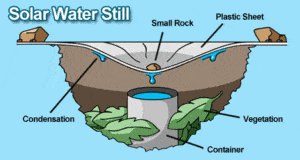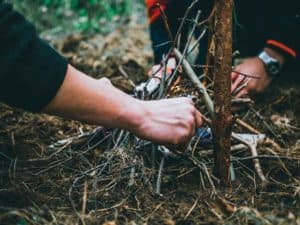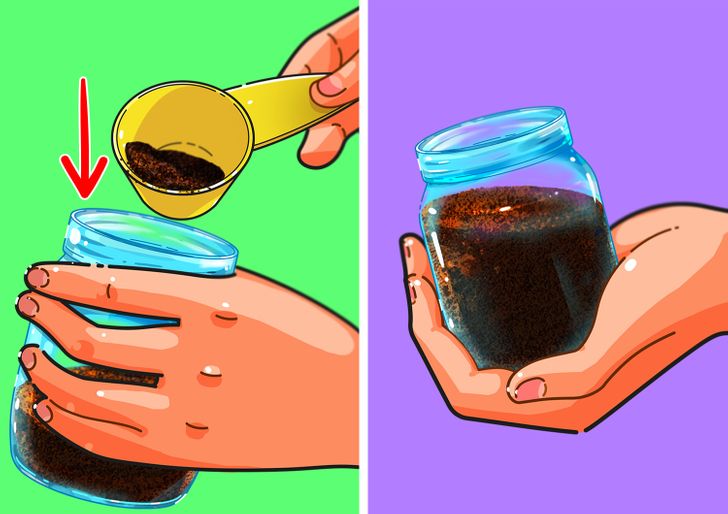Disasters such as plane crash or lost in the jungle can happen to anyone. No one wants to be stranded on an empty island or jungle.
Try to imagine things don’t go according to plan. With limited physical condition and equipment, can you survive? No need to be grandiose, can you spend one night in the wild?
You still need to know and master some survival tips basic skills to survive in the wild – not to frighten, just to be safe if this disaster happened to you one day.
So here are 12 survival tips that will save your life one day:
1. Look for Clean Water Source
Finding a clean water source should be your main priority. This is because water is a crucial and vital aspect in human body in order to survive.
The scientists found that human can survive up to 3 weeks without food, but not able to survive if there is no water within 3 to 4 days.
The fresh water source should be clean and drinkable. Salt water is not the option. Salt can make the body more dehydrated, which can lead to kidney failure if it continues to be consumed.
There are two types of water in the wild: water that you can drink and water that can kill you.
When you doubt that water is drinkable or not, your best choice is to cook it. If the water cooking option is not on the menu, you have to rely on rain and dew because rain water and dew don’t need to be cooked.
1st Method
Catch water when it rains. In the morning, wipe the dew off the leaves with a washcloth and squeeze the cloth in the container. Tree roots and some types of cactus such as sylibum (milk thistles) contain water in them. If there is a maple tree around you, cut the trunk because the sap of the maple tree can be an energy syrup for you.
2nd Method: Solar Water Still

- Dig a hole in the sand next to the trees. Dig until the sand feels moist.
- Place the container in the middle of the hole. Use any glass or container that can hold water.
- Fill the gaps that surround the container with anything wet, like wet leaves.
- Place the plastic sheet over the hole and hold the plastic sheet by placing stones on both sides.
- Place one small stone in the middle of the plastic, just above the container.
- Dew will begin to appear at the bottom of the plastic and run to the middle of the plastic. Later, water will drip into the container under the plastic.
3rd Method: Harvest Water From Trees
Like humans, plants also “sweat” all day. To be able to harvest this clean and drinkable water, all you have to do is wrap the leafy tree branches in plastic, then tie the plastic tightly. Within a few hours the water was collected in plastic and ready to drink.
2. Finding a Safe Overnight Place
The next survival tips from us is find a save place to sleep. You must find a place that is dry and not located lower than the surrounding ground surface. Avoid valleys and areas that can be irrigated. This is because floods can come at any time. Choose a place far away from insect nests or weathered trees. This is to prevent from being crushed by wood while you’re sleeping.
Establish Shelter

Remember, this is just a shelter. So don’t expect that you will find comfort in the tent.
Hypothermia is the main killer if you are stranded in cold weather areas like mountains. To be safe, you need an isolated shelter to keep your body temperature warm.
Find a few tree branches that are strong enough to be arranged as a shelter. Use the tree that is still standing as a pedestal. Cover your shelter with leaves or twigs. Don’t forget, also cover the floor with wider leaves. This is also used to prevent your body’s heat from being absorbed by the soil.
3. Make a Fire

Fire is an important element in our lives. With fire, we can stay warm when it is cold, cook raw food, and transform dirty water to clean water.
Mastering the science of fire means having to master how to light a fire, how to make a campfire, and how to defend a fire so it doesn’t die. When the match is up, you should be able to master the technique of making a fire with makeshift tools.
Below are the Step-by-Step on how to create a fire:
1st Method:
- Gather dried leaves, twigs, and branches of various sizes.
- Use a smaller branch, make a tepee (tripod) shape and put dry leaves (or dry paper / dry cloth if there are any) in the middle.
- Use glasses, binoculars, mirrors, or lenses to focus the sun’s rays on the material. Blow slowly afterwards.
2nd Method:
- Find any woods and make a curve at the bottom.
- Put some dry material on one end that you will burn.
- Use a hard stick to rub against the bottom of the curve that has been made.
- Dry material will start to heat and sprinkle small fires. Blow slowly to help the process of fire formation.
- When the fire starts blazing, put another small branch on it to help it get bigger.
4. Food
Humans need to eat to maintain their survival. When food supplies are running low, we can’t help but look for food in the wild. Nature provides abundant resources, including food.
By mastering the science of hunting, gathering, and fishing, we can immediately search for food in nature by using the knowledge we have mastered as the survival tips.
Hunting
When your carnivore desires can no longer be dammed, make a four-edged spear that will be far more effective in catching fish and other game than a single-edged spear.
The trick is to cut the tree wood so that it is the same length as a spear in general and has a diameter of approximately 2.5 centimeters. Cut one end into four parts, each 25 cm long. Put a small piece of wood or stone so that the four sections separate. Sharpen the edges. Become a four-edged spear that results from the hard work of your hands.
If you’re stuck on a dessert island, there are bunch of food options such as mollusks, oysters, clams, clams, seaweed and fish. Although, they require some treatment to ensure they are non-toxic. In essence, if a clam, oysters, are difficult to open, then they are not harmful.
If they come off easily or open easily then they are most likely to be sick, so avoid it. It’s important to test whether what you eat is poisonous. Start by rubbing food (clams, oysters) on the back of your hand and wait a few minutes to see if there are itching and other reactions. Always cook the raw food, this is to kill any bacterias and parasites and also neutralized any poison.
Eatable Plant

Survival tips: In a situation where your main goal is survival, you don’t need to be too grandiose to intend to hunt wild animals. Not only deer, rabbits are hard to catch. Hang your life on small animals like fish, frogs or lizards. However, the safest choice is eating plants. Bananas and pineapples are very easy to find in the forests of Indonesia. In addition, you can also consume rattan, bamboo shoots, clover leaves, and ferns. Add your insights about food in the wild from guide books.
Read Also: Why Is The Sea Water Salty? Can You Consume It For Survival?
5. Be aware of predatory threats
Always be aware of the dangers that may lurk you. You never know what animals live on the island that might be dangerous to your life. As a way to survive, make a spear with a pointed end from a tree trunk or branch that you find as a weapon of self-protection.
6. Navigation
Survival tips: The science of navigation will help us to find a way home or at least the way to other places where there is civilization. This navigation science includes the science of determining the direction, reading maps, GPS, etc.
Reading Natural Compass
If your GPS and compass is not working, you still can easily determine the east and west direction from the sunrise and sunset positions. If you are using an analog watch, face the clock to the sun. Draw an imaginary line between the clock and the number 12 – it’s the line that connects north and south.
Reading constellations
The easiest way to determine the direction of the compass after sunset is to find the constellation Big Bear. This constellation is also known as the Big Dipper, when the other constellations rotate and ‘move’ throughout the night the constellation stays north.
The characteristics of these star clusters are composed of 7 stars and in the form of a dipper. Well, across from Big Dipper there is a cluster of Little Dipper stars, which as the name suggests are smaller and not as large as Big Dipper. At the end of the ‘handle’ the Big Dipper is Polaris a.k.a. North Star: the most true north.
7. Make a Bowline Knot

Survival tips: If you used to be involved in scouting, these scout children called as “knot flags”. For those of you who don’t know, this knot is very useful for tying and holding weights. The heavier the load is holding, the tighter the knot binds.
8. Sending S.O.S. Signals

At one time, maybe because of physical conditions, your only hope is to wait for help. Try your to stand in an open area such as meadow or hilltop so that the rescue team is can spot you easier from top.
The first choice to make a signal is with a puff of smoke from a fire. Please remember: this is not a matter of big fire, but also how the smoke you produce can billow thick so that it attracts the attention of planes or passing ships. So when the fire that you make is blazing, pile leaves and grass that is still green and moist on it.
Smoke will billow thick. Even if it only lasts 10-15 seconds, it will be enough to attract attention. The second option is to use a signal from the mirror.
Take advantage of any object that can reflect light such as mirrors or cellphone screens. The key is to direct the reflection of light precisely, and this is quite easy.
Point the mirror that you have on the sun or moon (not directly, but tilted slightly) until you see the reflected light on the mirror’s surface.
When you see a ship or plane passing by, make a peace greeting with one of your hands, and “put” the ship or plane far away there between the two fingers of peace earlier. Then move the reflector light back and forth behind your peace greetings.
9. Strengthen Your Mental
Mentally and psychologically in a state of survival plays a big role. Mastering our mental and psychological conditions is sometimes even greater than any survival science. What makes humans able to survive in a harsh world is a positive attitude, peace of mind, and strong motivation.
Bottom Line
Some of the survival tips above require practice and strength of brain memory. There is no harm in you learning first at home, then invite a friend to adventure into the forest or mountain as well as you practice. Practice all the skills you know. Don’t forget to give information about where you are traveling to family, friends and local officials.






